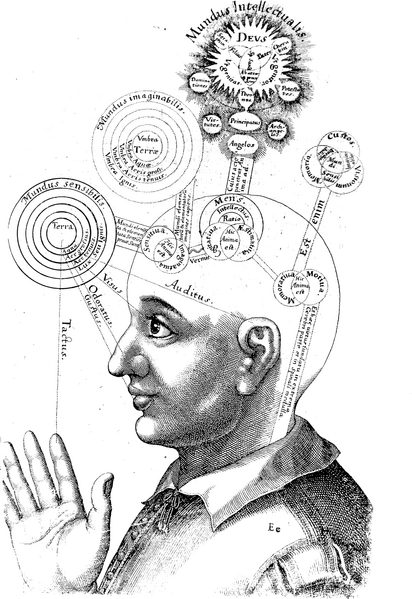Creativity Behind the Scenes
by Andrew Boyd
Today, creativity sneaks up on us. The University of Houston presents this series about the machines that make our civilization run, and the people whose ingenuity created them.
I recently had my curiosity piqued while attending a senior thesis presentation at a local high school. The topic was creativity, but of a very special kind: the creativity of the unconscious mind. And the young speaker made me aware of things I'd never really thought much about.
We've all experienced the unconscious mind at work: a light bulb going off when we least expect it. But is it happenstance, or is there something more going on? Are there things that promote or hinder imaginative wanderings?
Take color, our presenter asked. Do certain colors promote creative thought? Yes, say researchers. Blue, for example, is more conducive to creativity than red. It brought back memories of my first job working on communication satellites at a national research lab. A 1950s study had shown that green was the optimal workplace color, and I spent two years surrounded by milky green walls. I'm glad they weren't red, though beige would've been just fine.

Blue and Red Photo Credit: Andy Boyd

Green. Photo Credit: Andy Boyd
Ambient noise also has the potential to affect creative thought, and there's a Goldilocks principle at work. Too much noise and we can't think. Too little and there's nothing to disturb our train of thought. But it seems a moderate level of noise is just right, providing enough disruption to help keep the creative juices flowing.
But while the effects of color and noise on creativity were fun to think about, the idea that really stood out was the role of boredom. To make her case, the student asked us to consider the experience of sitting through a bad church sermon. We lose interest, the body has nowhere to go, and the mind drifts ' free to explore new ideas without focused thought. Boredom, she'd discovered, is a source of creativity.

John Kay's "The Sleepy Congregation". Photo Credit: Wikimedia Commons
Whether a church sermon, a business presentation, or, heaven forbid, a university lecture, it's something we can all relate to but have probably never thought much about. Plane trips. Waiting in line at the store. Sitting in the doctor's office. Given the chance, the drifting mind flows where it will, exploring creative new landscapes along the way.
And it leads us to ask: what happens when we're deprived of the opportunity to get bored? When cell phones, iPads, and portable game players fill every moment with on-demand entertainment? Are we depriving ourselves of the chance to let our mind do its job?
Slide after slide, the student presenter served up new ideas about the notion of unconscious creativity. I'm not sure we'll ever fully understand it, but there's no denying we have a lot going on in our heads that isn't part of our conscious stream of thought. And whatever the details, it's an important part of our ability to tackle life's problems.

Robert Fudd's 'Mind and Consciousness. Photo Credit: Wikimedia Commons
As the presentation came to an end I felt a sense of satisfaction. The talk had been carefully written, the slides complemented the words, and the pacing was perfect ' the result of what must have been a lot of practice. There was simply no opportunity to get bored. My unconscious mind had to wait for the drive home to reflect on what I'd heard.
I'm Andy Boyd at the University of Houston, where we're interested in the way unconscious minds work.
(Theme music)
Many thanks to Girija Chatufale of Houston's School of the Woods for inviting me to her presentation.
For a related episode, see CREATIVITY.
S. Bench and H. Lench (2013). "On the Function of Boredom." Behavioral Science, 3(3), pp. 459-472. See also: http://www.mdpi.com/2076-328X/3/3/459/htm. Accessed May 17, 2016.
S. Mann and R. Cadman (2014). "Does Being Bored Make Us More Creative?" Creativity Research Journal, 26(2), pp. 165-173. See also: http://www.tandfonline.com/doi/pdf/10.1080/10400419.2014.901073.
R. Mehta and R. Zhu. Blue or Red? Exploring the Effect of Color on Cognitive Task Performances. (From a now defunct University of Vermont website)
R. Mehta, R. Zhu and A. Cheema (2012). "Is Noise Always Bad? Exploring the Effects of Ambient Noise on Creative Cognition." Journal of Consumer Research, 39(4), pp. 784-799. See also: http://www.jstor.org/stable/10.1086/665048?origin=JSTOR-pdf.
This episode was first aired on May 19, 2016